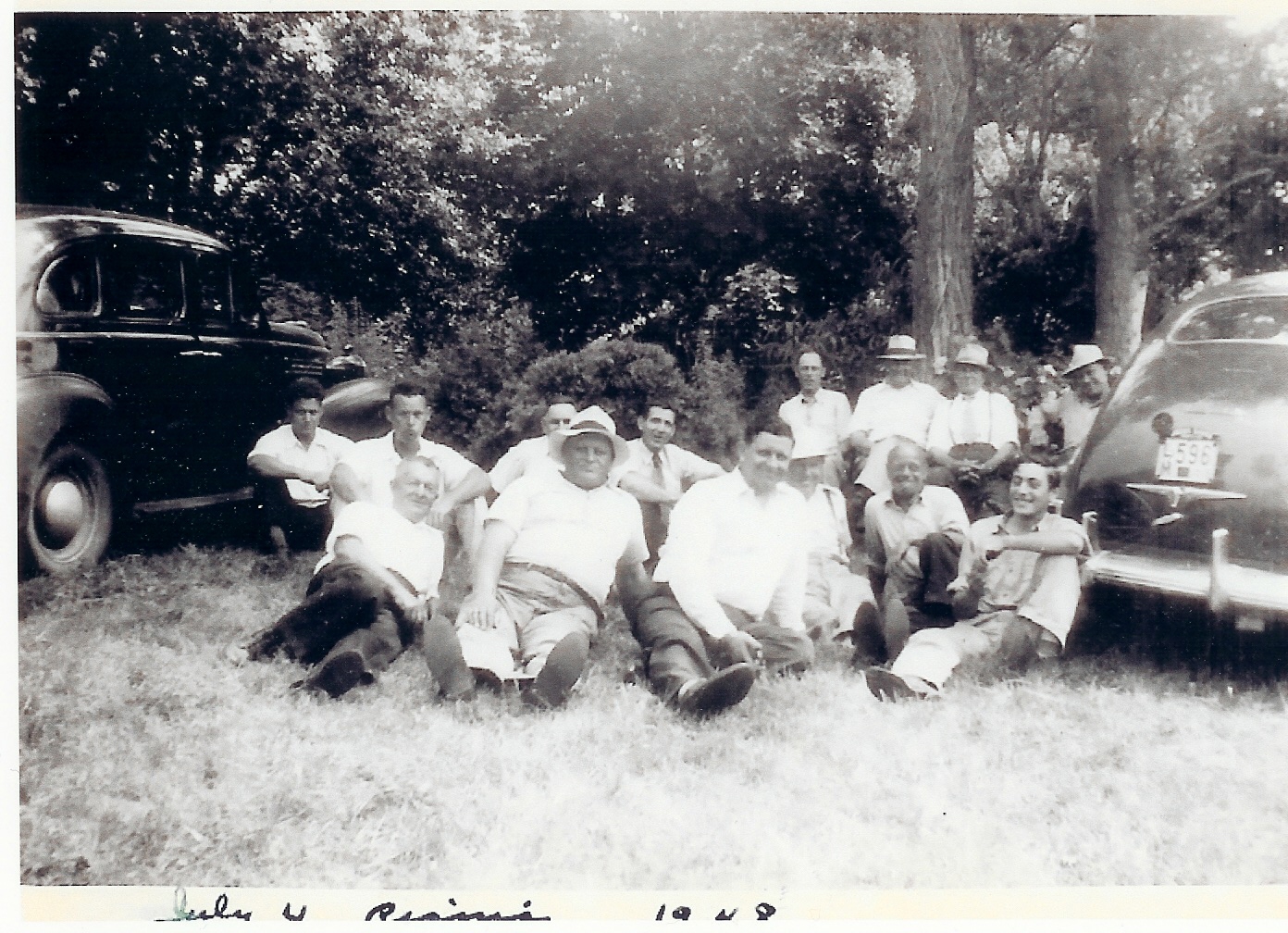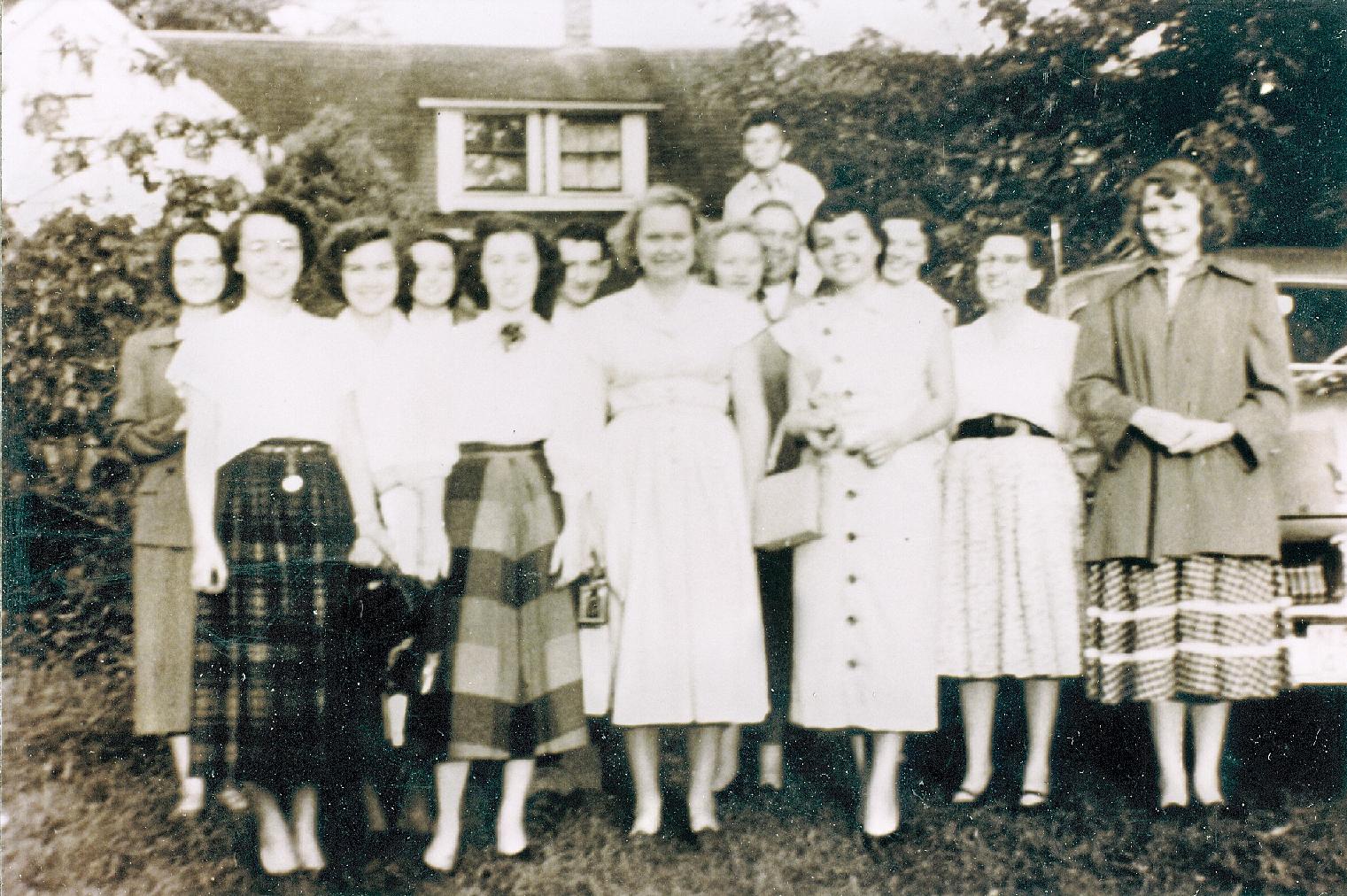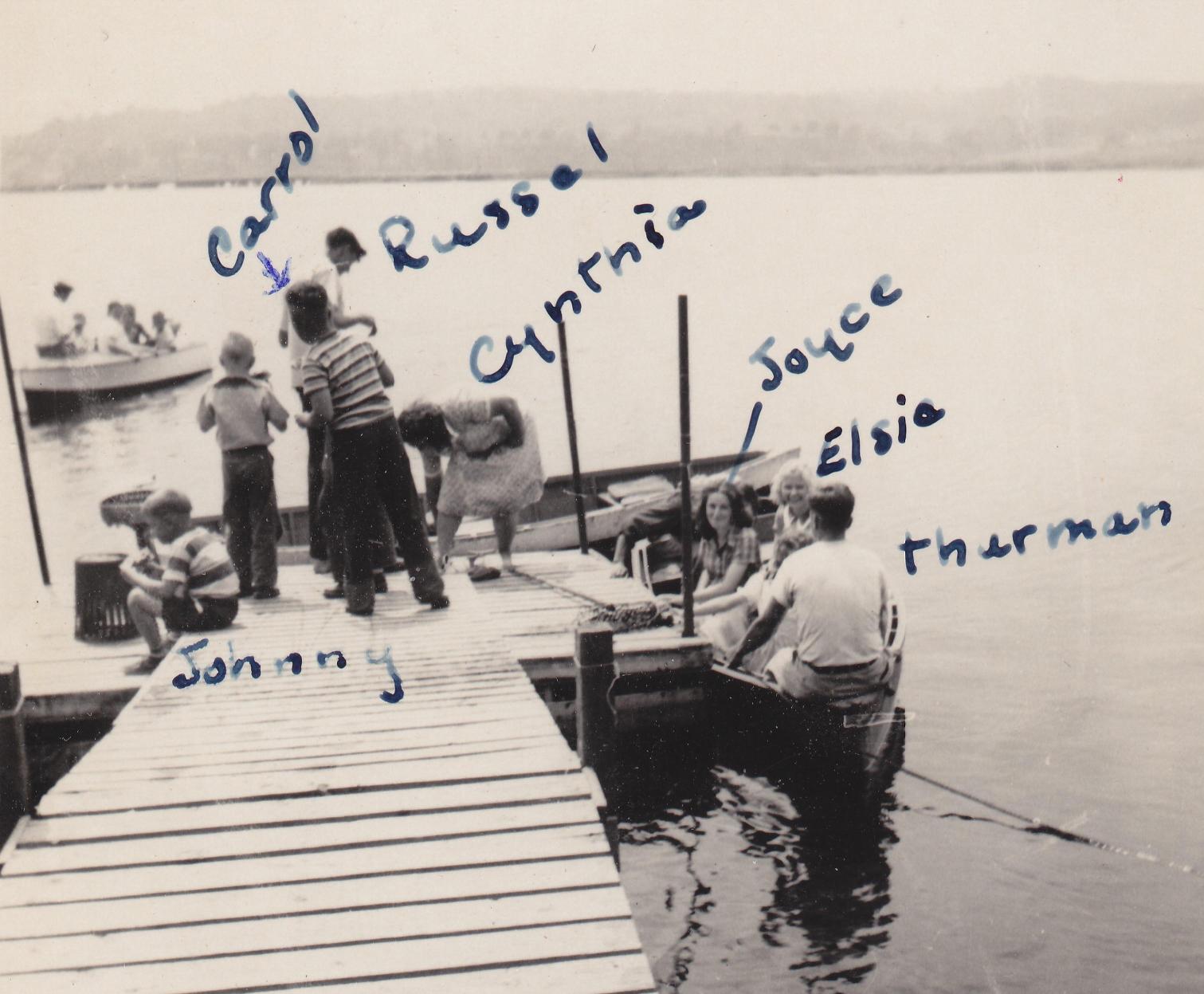![]()
FOURTH
OF JULY PICNIC
by Irene Watrous Schultz

|
| Fourth of July Picnic, 1948. |
The smell of powder, the rat-a-tat-tat of firecrackers, warm sunshine, and sweet red strawberries—I remember standing in our garden in the strawberry patch one hot Fourth of July morning with these sensations being very real to me. The first two I didn’t especially like, though the rockets and sparklers that some of my brothers and friends seemed to come up with later, after dark, were much more exciting. Back then, though, when roadside fireworks stands popped up all over the place just before the Fourth, the sounds and smells of fireworks through the day were simply a fact of life. The day's real fun and excitement, however, were yet to come—the annual Fourth of July church picnic.
The picnics were sponsored by the Sunday School of Quakertown Church; however, because so many of the members were relatives from a Rogerene Quaker background, the picnics were also like family reunions. Even families who had moved to other parts of the country would take their vacations at that time so they could come to the picnic and see all of their friends and relatives. Actually, regular church attendees who were not related were sort of adopted into the family as well. For many years, the picnics were held on a private estate on a cove of the Thames River in Ledyard. The caretaker, Mr. Baldwin (who regularly attended our church), had permission to invite us there to hold our Fourth of July picnics.
If you didn’t have a ride or way to get there, you could go up to the church about 10 o’clock in the morning and ride up on the back of a truck which had been outfitted with deacons' benches—and with truck fencing around the sides and back so that no one would fall off. Each family would bring food to share, usually either a salad or hearty food along with a dessert. There was always clam chowder for anyone who wanted it. Several of the men of the church would arrive there early in the morning and peal and dice mountains of potatoes and onions, open clams, and prepare whatever else they needed. I think they used either bacon or salt pork in it as well. For that matter, they might have dug the clams also. There was a huge outdoor stone fireplace where they had a very big caldron in which they made the chowder. Of course, they had a great time talking while they worked. One of the first things that greeted you when you arrived was the smell of smoke from the fire and the aroma of clam chowder cooking.
A short way from the fireplace was an area where tables were set up, with benches and chairs separate from the tables. The food was set out buffet style. You chose the food you wanted and went to a bench or chair or sat on the grass to eat it. I believe that most people also brought their own plates and eating utensils, although there were always extra there for people who didn’t, including bowls and spoons for chowder. Shade trees in this area provided relief from the usual Fourth of July heat. People mingled,

|
|
Picnic Group, ca. 1950.
|

|
|
Boating on the Thames River, 1951. Photo courtesy of Judy Hogue.
|
There was always a generous spread of food and great variety: salads and casseroles of many types, pies of all varieties, cakes, brownie-type finger desserts. And there was always the chowder and watermelon—several huge watermelons kept on ice until ready to be cut. I remember getting a plate of food and finding a place on the grass to sit and eat it. Some people brought blankets, and their families sat picnic-style on those to eat.Then there were the groups of friends who sat together. It was fun to sit among several such groups and be entertained by their chatter.
On the other side of the fireplace there was a path that led down to water. Usually some of the older boys would go to the other side of the cove to the area that used to be known as Happyland where there was a boat rental. They would rent a couple of boats for the day and row them to the side of the cove where we were having the picnic. Throughout the day, they would take people out for rides on the water. That added a little excitement to the day. Sometimes though, one or two of the boys would decide it was fun to tease some of the younger kids by rather roughly rocking the boat they were in. I remember being afraid of going out in a boat with those certain cousins, because I didn’t know how to swim.
There was a grassy area on the other side of a hedge in the estate yard that was great for children to play in, and someone often had organized games to keep the children busy. In the afternoon there could be music from accordions and other instruments, special singing, and sometimes speakers. We even had weddings occasionally. After all, most of our relatives and friends were already there and the picnic was a ready-made reception.
In later years, after the picnics had stopped and many of the older people had passed on and the church had even closed briefly, several in the family tried to revive the Fourth of July picnic. One cousin had two fairly successful ones at his property by the water in Stonington. A couple of other cousins had a few in successive years at Washington Park in Groton, but although those were good, they just weren’t the same. Our nostalgia will always be for the picnic-reunions that Mr. Baldwin arranged at the estate on the cove in Ledyard—for the smell of smoke and clam chowder, the chatter of friends and relatives catching up on each other’s news, the flash of cameras, the music and singing, boating on the cove, and even riding to the picnic on a truck.
Return to QUAKERTOWN Online